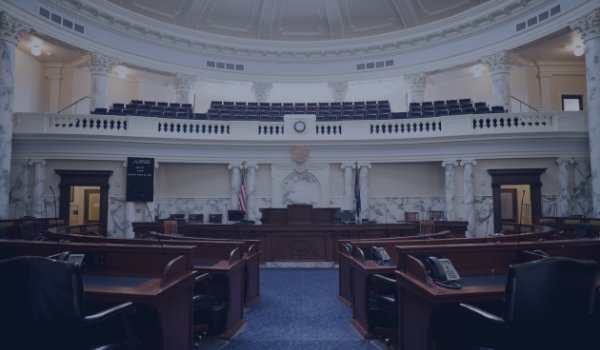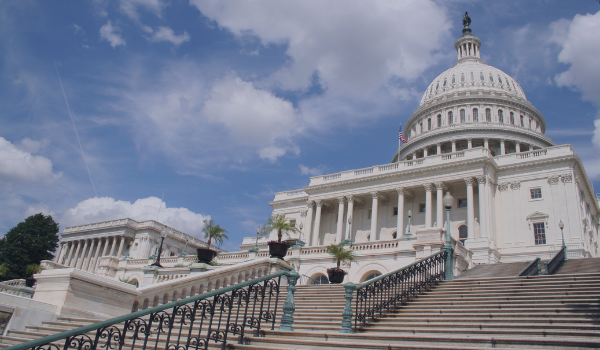On December 29, 2022, President Joe Biden signed a mammoth piece of legislation called the Consolidated Appropriations Act, 2023, which funds the government for the fiscal year that began on October 1, 2022. Embedded in that legislation, as Division T, was the SECURE 2.0 ACT of 2022 (the SECURE Act 2.0 or the Act). The final version of the SECURE Act 2.0 reconciled separate bills passed by the House and the Senate during 2022.
The SECURE Act 2.0 includes many provisions designed to enhance the retirement savings of American workers. While some of its provisions take effect immediately, most do not become effective until plan years commencing after December 31, 2023, or later. The SECURE Act 2.0 has more than ninety sections. The following is a discussion of some of the more salient provisions. This report relies, in part, upon the summary prepared by the Senate Finance Committee.
I. Title I of the SECURE Act 2.0
Title I of the SECURE Act 2.0 is entitled “Expanding Coverage and Increasing Retirement Savings”. It is designed to increase participation in retirement plans and enhance retirement savings.
1. Automatic Enrollment
Section 101 of the SECURE Act 2.0 amends the Internal Revenue Code by inserting a new section 414A, which provides that no 401(k) plan, established after the effective date of the section, shall be treated as a qualified plan unless it provides for automatic enrollment.
The automatic enrollment provision requires employers with eleven or more employees to automatically enroll an employee in the employer’s 401(k) plan when they become eligible. The employee may subsequently opt out of participation in the plan. But this provision changes the normal procedure for most 401(k) plans where employees are required to affirmatively elect to join the plan. The deferral amount must be at least 3%, although an employer can choose a greater deferral amount.
In addition, an employer’s deferral amount must thereafter increase by 1% each year until it reaches 10%. In addition to the auto-enrollment requirement, the plan must provide a qualified default investment option for employees who do not select an investment option. An employee always has the option of moving from the plan’s qualified default investment option to any other investment offered by the plan.
There are other exceptions to the auto-enrollment requirement. The auto-enrollment requirement applies to new plans only. Existing plans are exempt from the auto-enrollment requirement. In addition to the small-employer exception, new businesses (i.e., those businesses that have been in business for three or fewer years), church plans and governmental plans are not subject to the auto-enrollment requirement.
The automatic enrollment provision is effective for plan years beginning after December 31, 2023.
2. Start-Up Credit
The Code currently provides a credit to certain employers that adopt a qualified retirement plan to help subsidize start-up costs. The current credit is 50% of the administrative costs for the first three plan years up to a maximum of $5,000 per year. Section 102 of the SECURE Act 2.0 increases the credit for employers with 50 or fewer employees. The credit for those employers is increased to 100%.
Section 102 of the SECURE Act 2.0 also adds a new credit for any plan other than a defined benefit plan. The amount of the new credit is a percentage of the amount that the employer contributes to the plan up to $1,000 per employee. The full credit is available for employers with 50 or fewer employees. It is phased out for employers with 51 – 100 employees. For those larger employers, the applicable percentage is 100% in the first and second plan years, 75% in the third plan year, 50% in the fourth plan year, 25% in the fifth plan year and no credit for subsequent plan years.
The provisions of section 102 of the SECURE Act 2.0 are effective for plan years beginning after December 31, 2022.
3. Saver’s Match
Current law provides for a nonrefundable credit for contributions to an individual retirement account (IRA) or employer-sponsored retirement plans, such as 401(k) plans. The credit is a cash payment made to qualifying taxpayers based upon their tax return. The credit is nonrefundable, which means that an employee without any tax due does not qualify for the credit.
Section 103 of the SECURE Act 2.0 replaces the credit with a federal matching contribution that is paid to a taxpayer’s retirement account, whether an IRA or 401(k) plan. The federal match is 50% of the taxpayer’s contribution up to $2,000. The match phases out depending upon a taxpayer’s income – between $41,000 and $71,000 for married taxpayers filing joint returns; $20,500 to $35,000 for single taxpayers and married but filing separately; $30,750 and $53,250 for head of household filers.
The provisions of section 103 of the SECURE Act 2.0 are effective for taxable years beginning after December 31, 2026.
4. Increase in Age for Required Minimum Distributions
Participants in a qualified retirement plan are required to begin taking distributions from the plan at a certain age. Currently, a plan participant is required to begin taking distributions by April 1 of the calendar year after the later of the calendar year in which the plan participant attains age 72 or retires.
Section 107 of the SECURE Act 2.0 increases the age when a plan participant must begin taking required minimum distributions. The age at which a participant must begin required minimum distributions increases to 73 after January 1, 2023, and to 75 on January 1, 2033.
Section 107 is effective for distributions required to be made after December 31, 2022, for any plan participant who turns 72 after December 31, 2022.
5. Indexing IRA Catch-Up Contributions
Section 108 of the SECURE Act 2.0 indexes the catch-up amount that an individual may contribute to an IRA. Currently, any individual who is 50 years or older can make a catch-up contribution to an IRA in the amount of $1,000. That amount is not currently indexed for inflation. For plan years after December 31, 2023, the catch-up amount will be indexed for inflation.
6. Catch-Up Contributions
Section 109 of the SECURE Act 2.0 increases the catch-up amount that certain employees can contribute to their 401(k) plans. For 2023, employees over the age of 50 can make a catch-up contribution of $7,500. Under the amendments made by section 109 of the SECURE Act 2.0, employees who have attained ages 60, 61, 62 and 63 will be able to increase their catch-up contribution to the greater of $10,000 or 50% more than the regular catch-up amount in 2025. Both of these amounts are indexed for inflation after 2025.
The provisions of section 109 of the SECURE Act 2.0 are effective for taxable years beginning after December 31, 2024.
7. Student Loan Payments
Congress has recognized that many workers are unable to contribute to 401(k) plans because of student loan debt. And, because they are unable to contribute, they are ineligible for employer matching contributions. Section 110 of the SECURE Act 2.0 treats “qualified student loan payments” as an employee deferral. This means that an employer can make matching contributions based on an employee’s qualified student loan payments. The term “qualified student loan payments” means “any indebtedness incurred by the employee solely to pay qualified higher education expenses of the employee”.
In addition, for purposes of discrimination testing, section 110 permits an employer to test separately the group of employees who receive matching contributions for student loan payments.
The provisions of section 110 of the SECURE Act 2.0 are effective for contributions made for plan years beginning after December 31, 2023.
8. Incentives to Participate
Under current law, the only incentive that an employer may provide to encourage its employees to participate in a qualified plan is employer contributions. Section 113 of the SECURE Act 2.0 permits employers to offer “de minimis financial incentives”, as long as the incentives are not paid with plan assets. The statute does not define the term “de minimis”. However, the Senate Finance Committee report says that section 113 of the SECURE Act 2.0 contemplates something like “low-dollar gift cards”.
Section 113 of the SECURE Act 2.0 is effective for plan years beginning after the date of the enactment of the Act, which is December 29, 2022.
9. Withdrawals for Certain Emergencies
Under current law, early distributions from a qualified retirement plan are subject to a penalty of 10%. Section 115 of the SECURE Act 2.0 provides an exception for “emergency expenses, which are unforeseeable or immediate financial needs relating to personal or family emergency expenses”. Only one distribution, limited to $1,000, is allowed per year, and it must be paid back. The early distribution must be repaid within three years. No additional distributions are allowed during that 3-year period unless repayment in full occurs.
Section 115 of the SECURE Act 2.0 is effective for distributions made after December 31, 2023.
10. Starter 401(k) Plans
Section 121 of the SECURE Act 2.0 permits an employer that does not sponsor a qualified retirement plan to implement a starter 401(k) plan. A starter 401(k) plan would require that all employees be automatically enrolled in the plan at a deferral rate of between 3% and 15% with a limit equal to the IRA contribution limit. An employee could subsequently opt out of the plan. In addition, a starter 401(k) plan could permit catch-up contributions for employees over the age of 50 in the same amount as catch-up contributions to an IRA. A starter 401(k) plan is a deferral plan only. Employer contributions to the plan are not allowed.
Section 121 of the SECURE Act 2.0 is effective for plan years beginning after December 31, 2023.
11. Part-Time Workers
Congress has recognized the need to enhance the opportunity to save for retirement for part-time workers. Under current law, qualified retirement plans are required to allow part-time employees to participate in the plan.
And, for that purpose, a part-time employee is defined as an employee who works at least 1,000 hours in any plan year or 500 hours in three consecutive 12-month periods. Section 125 of the SECURE Act 2.0 reduces the three-year period to two years. Section 125 also provides that service time accrued before 2021 is not taken into account for purposes of vesting.
This change is effective for plan years beginning after December 31, 2024.
12. Plan-Linked Savings Accounts
Section 127 of the SECURE Act 2.0 provides plan sponsors the option of adding an emergency savings account linked to their employer-sponsored, retirement plans. These plan-linked savings accounts may be offered to non-highly compensated employees only. An employer may automatically enroll their non-HCEs into these accounts at a deferral rate of no more than 3% of salary, capped at $2,500 or lower, as determined by the employer. Contributions in excess of the cap are directed to the employee’s Roth defined contribution account, if they have one, or stopped until the balance in the employee’s account falls below the cap.
Contributions are made as Roth contributions and are treated as elective deferrals for purposes of employer matching contributions. Employees must be permitted to make monthly withdrawals from their emergency savings accounts with no fees charged by the plan sponsor for the first four monthly withdrawals during any plan year.
The provisions of section 127 of the SECURE Act 2.0 are effective for plan years beginning after December 31, 2023.
II. Title II of the SECURE Act 2.0
Title II of the SECURE Act 2.0 is entitled “Preservation of Income”. It contains four sections, which, in essence, make it more attractive for a plan to invest in certain types of annuity contracts. While beyond the scope of this article, the required minimum distribution regulations often make investment in certain annuity contracts difficult because the payments under the annuity contracts do not comply with the required minimum distribution regulations.
For example, the SECURE Act 2.0 makes it easier for a plan to offer a guaranteed annuity contract where the payments increase over time. In addition, the Act enables a plan to offer a “qualifying longevity annuity contract”, which is a deferred annuity with payments that begin closer to the end of a person’s life expectancy.
A qualifying longevity annuity contract is generally less expensive because the payments begin later and are likely to last for a shorter period of time. However, a qualifying longevity annuity contract ensures that a person will not outlive their assets. Without the changes made by Title II of the SECURE Act 2.0, a qualifying longevity annuity contract would violate the required minimum distribution regulations because payments would not commence until well after the RMD start date.
III. Title III of the SECURE Act 2.0
Title III of the SECURE Act 2.0 is entitled “Simplification and Clarification of Retirement Plan Rules”
1. Recovery of Retirement Plan Overpayments
Under current law, a plan sponsor is required to seek a refund of overpayments made to a plan participant. These overpayments are often caused by mistakes made by the plan sponsor or its administrator. Section 301 of the SECURE Act 2.0 provides that a plan sponsor no longer has to attempt to recover overpayments from plan participants. In addition, if a plan sponsor does choose to seek recovery of overpayments, it is limited to overpayments made within the prior three years.
The provisions of section 301 are effective on the date of the enactment of the Act.
2. Reduction in Excise Tax
Under current law, a plan participant who fails to take a required minimum distribution is subject to an excise tax equal to 50% of the required minimum distribution. Section 302 of the SECURE Act 2.0 reduces the penalty to 25%. In addition, if the failure to take the required minimum distribution is from an IRA, and it is corrected in a timely manner, the penalty is further reduced to 10%.
The provisions of section 302 are effective on the date of the enactment of the Act.
3. Expansion of Employee Plans Compliance Resolution System
Errors in the administration of a qualified retirement plan can result in the disqualification of the plan. This means that contributions to the plan, whether by the employer or its employees, would no longer be tax deductible and the gains on investments in the plan would no longer be tax-deferred. The IRS has a program called the “Employee Plans Compliance Resolution System” (EPCRS) that enables a plan sponsor to self-correct certain types of errors; in some cases, without even having to contact the IRS. Section 305 of the SECURE Act 2.0 expands the types of errors that may be resolved through the EPCRS.
Section 5 becomes effective on the date of the enactment of the SECURE Act 2.0. However, the IRS has two years after the effective date to provide guidance on how the changes made by section 305 will be implemented.
4. Employee Self-Certification
Early distributions from a qualified retirement plan are exempt from the 10% penalty in the case of hardship. Section 312 of the SECURE Act 2.0 provides that, under certain circumstances, a plan sponsor can rely on the employee’s self-certification of hardship. In those cases, documentary proof of hardship will not be required.
The provisions of section 312 of the SECURE Act 2.0 are effective for plan years beginning after the date of the enactment of the Act.
5. Family Attribution Rules
Under current law, employees of employers in a “controlled group” must be aggregated for the purpose of performing certain discrimination testing. Whether separate businesses form a controlled group depends upon the ownership structure of each business. In determining ownership, the interest of one person is often attributed to another person.
One such attribution rule involves spouses. Whether the ownership of one spouse is attributed to the other spouse often depends upon whether the spouses live in a community property state. Section 315 of the SECURE Act 2.0 amends section 414(b) of the Code by providing that the community property laws of any state will be disregarded for purposes of determining ownership. The purpose of this change is to level the playing field between community property states and separate property states.
The provisions of section 315 are effective for plan years beginning after December 31, 2023.
6. Solo 401(k) Plans
It used to be that an employer had to adopt a qualified retirement plan by the end of its tax year. The SECURE Act changed that to permit an employer to establish a new 401(k) plan before the due date of the employer’s tax return plus extensions. Section 317 of the SECURE Act 2.0 expands this provision and permits sole proprietors and single-member LLCs to establish and fund a new 401(k) plan up to the due date of its tax return. However, the plan must be established and funded before the employer’s original filing date. Sole proprietors and single-member LLCs cannot take advantage of any filing extensions.
Section 317 of the SECURE Act 2.0 is effective for plan years beginning after the date of enactment.
7. Roth Distribution Rules
Under current law, an IRA owner is not required to take minimum distributions from a Roth IRA prior to death. The same rule does not apply to the owner of a Roth account in a 401(k) plan. Section 325 of the SECURE Act 2.0 amends section 402A(d) of the Code to provide equal treatment for 401(k) plans by adding a new subsection that eliminates the pre-death distribution requirement for Roth accounts in 401(k) plans.
The provisions of section 325 of the SECURE Act 2.0 are effective for tax years beginning after December 31, 2023.
8. Replacement of SIMPLE IRAs
Section 332 of the SECURE Act 2.0 permits an employer to terminate its SIMPLE IRA plan during the plan year as long as the employer replaces it with a safe harbor 401(k) plan as of the date of termination. This section is effective for plan years beginning after December 31, 2023.
9. Paper Statements
Under ERISA, a plan sponsor is required to provide certain statements to plan participants on a regular basis. Section 338 of the SECURE Act 2.0 amends ERISA to provide that, unless a participant elects otherwise, certain of the statements must be provided in writing on paper. For defined contribution plans, statements must be provided quarterly. Section 338 requires that one of these quarterly statements be provided in writing on paper. The other three can be provided electronically. For defined benefit plans, a statement must be provided once every three years. Section 338 provides, that, unless a plan participant elects otherwise, the statement must be in writing on paper.
Section 338 directs the Secretary of the Department of Labor to update the regulations under ERISA by December 31, 2024. The paper statement provisions of section 338 become effective for plan years beginning after December 31, 2025.
10. Cash Balance Interest Rate
Section 338 of the SECURE Act 2.0 amends section 411(b) of the Code by adding a subsection (6) that provides for cash balance plans that use a variable interest rate:
the interest crediting rate which is treated as in effect and as the projected interest crediting rate shall be a reasonable projection of such variable interest crediting rate, not to exceed 6 percent.
According to the Senate Finance Committee, the purpose of this change is to allow “plan sponsors to provide larger pay credits for older longer service workers”.
The provisions of section 338 of the SECURE Act 2.0 are effective for plan years beginning after the effective date of the Act.
IV. Title VI of the SECURE Act 2.0
Title VI of the SECURE Act 2.0 is entitled “Revenue Provisions”. These are the provisions designed to raise revenue to offset the revenue lost by expanding access to tax-deductible retirement planning. There are six revenue-raising sections in Title VI of the SECURE Act 2.0. This article will discuss the two most relevant sections.
1. Catch-Up Contributions as Roth Contributions
Under current law, catch-up contributions can be made on a pre-tax basis or as contributions to a Roth account within the plan, if the plan sponsor permits such contributions. Section 603 of the SECURE Act 2.0 amends the law to require that any catch-up contributions made by an employee with income in the preceding calendar year in excess of $145,000 must be made as Roth contributions. Employees with income less than $145,000 can still make catch-up contributions on a tax-free basis. The threshold of $145,000 is adjusted for inflation.
The provisions of section 603 of the SECURE Act 2.0 are effective for plan years beginning after December 31, 2023.
2. Option to Treat Employer Contributions as Roth Contributions
Under current law, employer contributions to a qualified retirement plan must be made on a pre-tax basis. Section 604 of the SECURE Act 2.0 permits a plan sponsor to give plan participants the option of receiving employer contributions as Roth contributions.
The provisions of section 604 of the SECURE Act 2.0 are effective upon the enactment of the Act.
The SECURE Act 2.0 is a complex piece of legislation that has a wide-ranging impact on retirement planning. This article could not possibly cover all of the provisions of the Act. If you have any questions about the provisions, which this article did cover, or those provisions that were not covered, contact RMC Group at 239-298-8210 or rmc@rmcgp.com.
Click here to read about previous updates on Secure 2.0.



